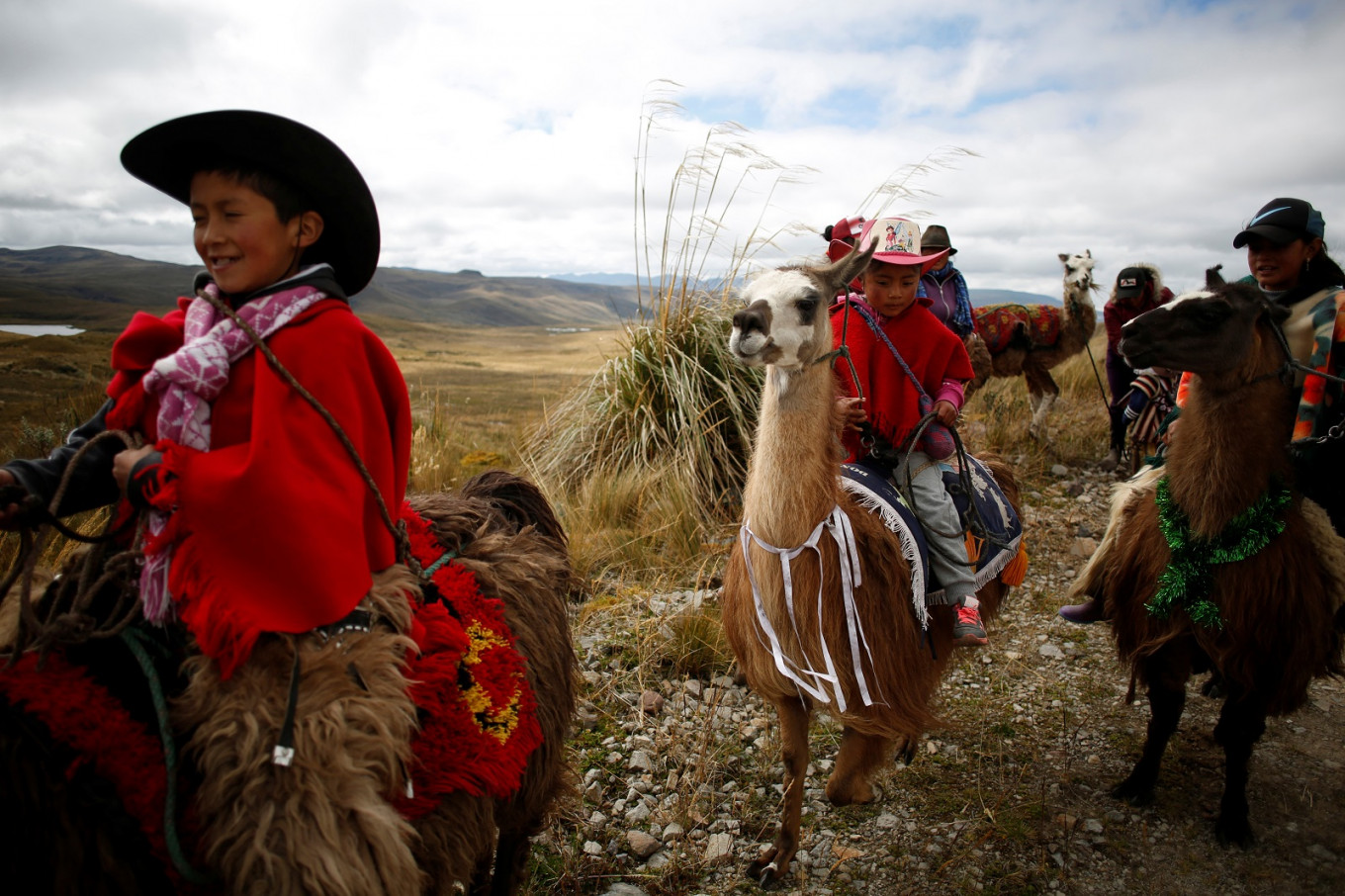Popular Reads
Top Results
Can't find what you're looking for?
View all search resultsPopular Reads
Top Results
Can't find what you're looking for?
View all search resultsEcuador children race llamas to save wetland park
Change text size
Gift Premium Articles
to Anyone
A
t dawn on a cold morning characteristic of Ecuador’s highlands, about 20 children got ready to show off their skills in a llama race on Saturday.
Dayana Toapanta, at just 10 years old, is one of the most experienced riders and decided to return this year after recovering from a hard fall.
“It gives me a lot of excitement and my heart says that I can win or not,” said Toapanta while adorning a llama with green ribbons in the community of Sacha, located in the Cotopaxi province south of Quito.
The race known as “Llamingada” takes place every year in Llanganates National Park, one of the most important wetlands on the planet that covers nearly 850 square miles (2,200 square km). The goal of the event is to raise awareness among indigenous communities about the importance of the park’s care.
The first rays of sunlight illuminate the mountains as riders between 4 and 12 years old dressed in ponchos and traditional fur and leather riding pants, known as zamarros, begin to gather at the Laguna de Anteojos, where the race will begin. Each child arrives with their llama at the lake, which has an elevation of 4,000 meters.
The competitors have raised the animals, training them for work in the fields and racing competitions.
Read also: Sempur English Camp in Bogor preps children for brighter future
“Jaimito makes me happy, but Pichirilo (her other llama) gives me problems because he is badly behaved,” said Toapanta, who finds time to care for her four llamas between her studies. She dreams of becoming a lawyer.
“Jaimito is my friend,” she said before winning the race.
Home to about 300 lagoons and cloud forests, the park was recognized by UNESCO in 2008 because of its importance as a habitat for waterfowl.
Ecuador’s environmental authorities promote llama breeding and reproduction in the region, noting the animal does not damage the ecosystem of wetlands and paramos like other livestock.
Llamas are also highly valued by the area’s indigenous groups as they are a key mode of transport for those moving goods from the mountains to main roads.
“The llama has a lower environmental impact because its leg has a pad shape and so it does not affect the compaction of the land,” Diego Bastidas, regional director of the Environment Ministry told Reuters.











